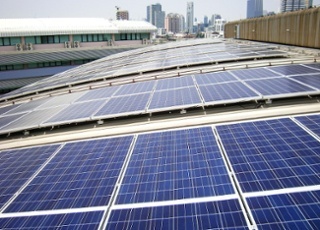 Lithium ion technology is frequently being pushed into new frontiers, and those advancements are increasing our potential to live more environmentally-friendly and economically-savvy lives. Let’s take Tesla’s Powerwall, a lithium-ion home battery, for example. The product gained swift popularity and notoriety since it was announced in 2015, and now the first long-term user reviews are trickling in. The reviews are mixed when it comes to the product’s usability and financial opportunity, but one thing is universal: the product is a good idea. The Powerwall is a battery bank designed to store electricity from solar panels or other sources, and then act as an emergency power supply or an additional power source during peak electricity usage times — when using the power grid is expensive. Using lithium batteries to offset a consumer’s power demand isn’t a new concept—we offer that solution ourselves—but the availability of products like this can change how people interact with their homes.
Lithium ion technology is frequently being pushed into new frontiers, and those advancements are increasing our potential to live more environmentally-friendly and economically-savvy lives. Let’s take Tesla’s Powerwall, a lithium-ion home battery, for example. The product gained swift popularity and notoriety since it was announced in 2015, and now the first long-term user reviews are trickling in. The reviews are mixed when it comes to the product’s usability and financial opportunity, but one thing is universal: the product is a good idea. The Powerwall is a battery bank designed to store electricity from solar panels or other sources, and then act as an emergency power supply or an additional power source during peak electricity usage times — when using the power grid is expensive. Using lithium batteries to offset a consumer’s power demand isn’t a new concept—we offer that solution ourselves—but the availability of products like this can change how people interact with their homes.
By their very nature, products like the Powerwall or RELiON’s renewable energy solutions and battery bank force people to think about how much electricity they use, when they use it and how they use it. By thinking about it, they become more conscious consumers; e.g., does it make more sense to drain the lithium ion battery bank in order to save money on the electric bill, or should that energy be kept in case a storm knocks out the local power supply?
The answers to those questions depend on what type of renewable home energy setup you’re using.
Products like Tesla’s Powerwall are marketed with one primary benefit: saving people money on their electricity bills by supplementing their daily electricity usage with the energy stored in the lithium batteries. They essentially want people—and businesses—to practice peak shaving in order to save electricity costs. It’s a great idea, and it’ll help lower infrastructure demand on the power grid.
Other products, like the custom lithium ion batteries RELiON sells, can be used for peak shaving and perform the task well, but our product focus on battery safety, longevity and reliability also means we can offer unique opportunities for NGOs or other charitable organizations that want to provide renewable power for developing communities.
This difference is primarily because of the battery chemical composition. There are basically three different lithium chemistries. If chemists add a little salt or pepper to the formula then there are thousands of possible distinctions, which lets every manufacturer create unique compositions to promote one cause or effect, such as battery capacity or charge time. We put safety first and lean toward the side of longer life at the sacrifice of specific energy, energy per unit volume or mass, which simply means our products need to be larger to provide the same energy as the Powerall. We do this by utilizing the most robust and thermally stable chemistry available today. Both energy solutions are premium products, but our long-term goals are different. If you compare our composition to a different company, like Tesla, then you’ll see that based on the same size battery they can get a lot more energy output than we do, but that energy is sacrificed by battery longevity.
In an application like a daily home power supply—especially when powering remote areas or developing nations—safety and longevity are critical
Here is why:
A battery focused more on providing more capacity in a smaller size than longevity loses its capacity way too fast to be financially reasonable in situations where the power system needs to last for years on end. If you have an NGO that can provide basic electricity to several homes in a rural village from one solar powered battery bank, then you want that system to last and withstand the rigors of daily use because products like the Powerwall are expensive.
RELiON’s system might cost twice as much upfront than a Powerwall, but it has 10 to 12 times the lifespan. In comparison, using Tesla’s battery system means that you’ll be losing 30 percent of the possible power in less than two years of use, assuming you use it for a daily electricity supplement.
So in practically no time at all, you’ll be back to drawing an additional 30 percent of electricity from the power grid and increasing your bill. And in situations where there is no power grid, like a developing country or remote research station, then you’ll be stuck operating on less overall power in general.
Deciding how you’re planning on using a product like the Powerwall can help you discover what solution best fits your needs. Please contact us if you’re interested in learning more about how RELiON’s home or business energy solutions can help you achieve your energy goals.